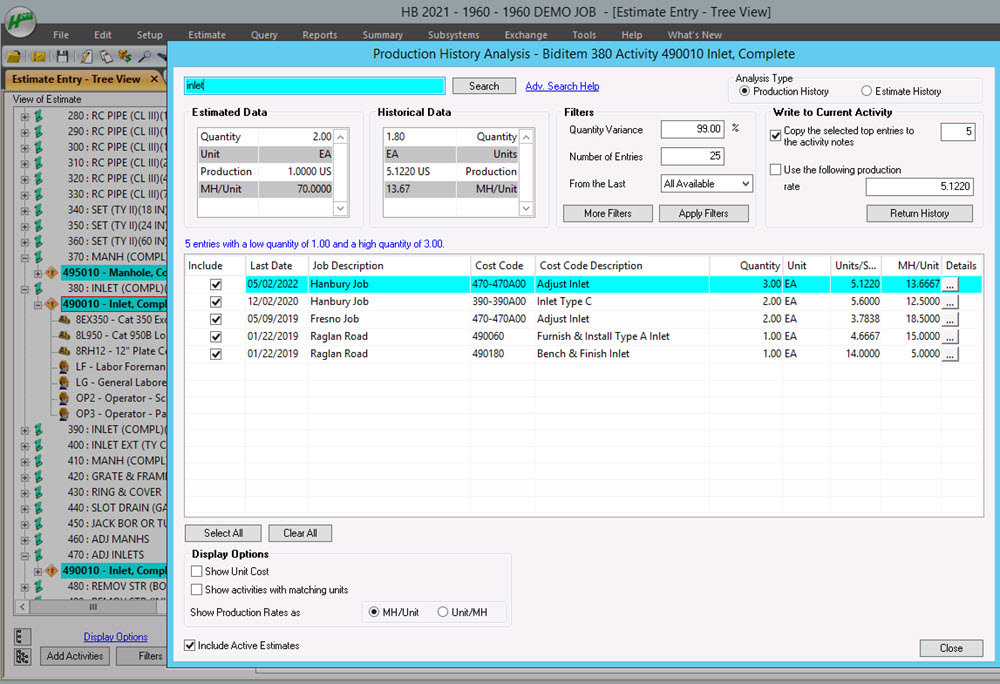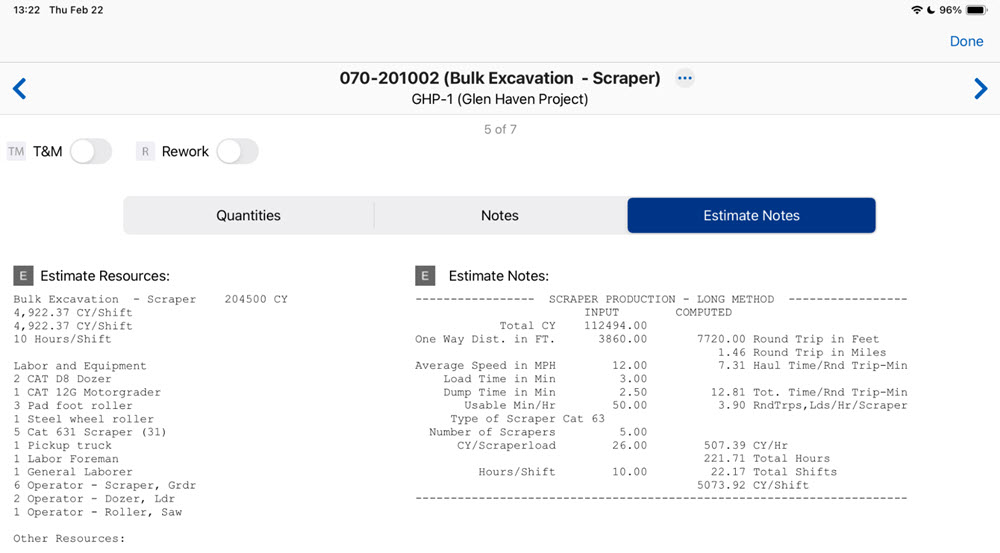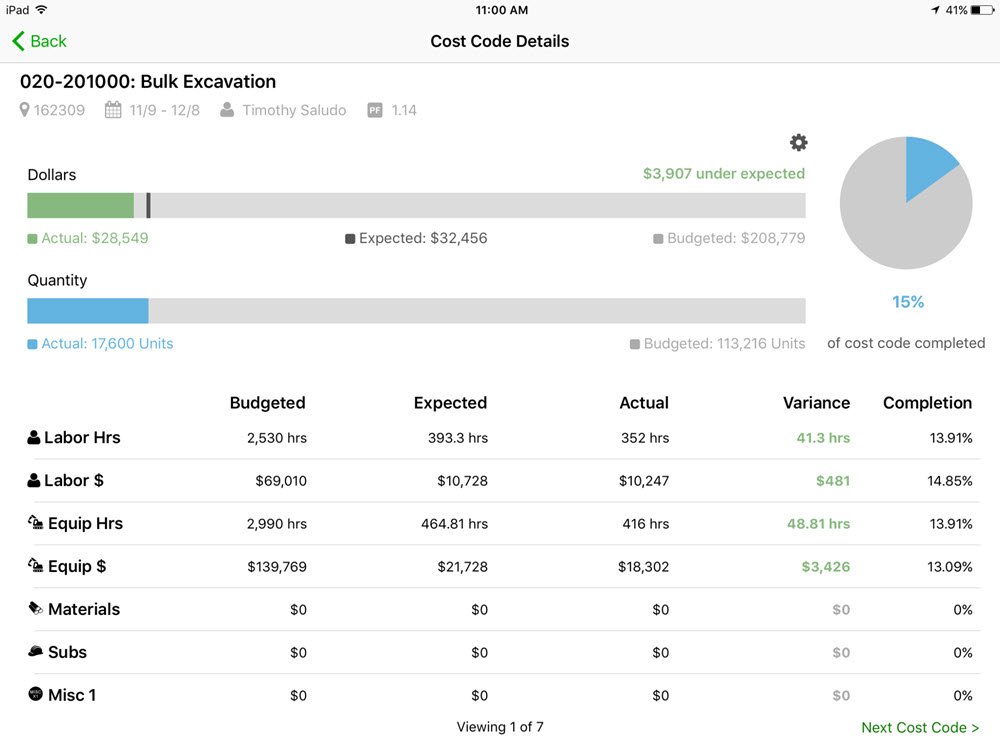On May 22, HCSS held an exclusive webinar highlighting specific HeavyJob features that revolutionize project management and estimation in the construction industry. Hosted by Taylor Pruitt, a Construction Software Expert, and Andrew Fowler, a Senior Product Manager, the pair launched a presentation followed by an in-depth Q&A session, which was prompted by attendees from all over the U.S., from California to Florida and even Hawaii.
During the webinar, two crucial questions were proposed:
- How easy is it for your office to utilize data from the field?
- How satisfied are you with your end-of-job reporting?
For anybody not using HeavyBid or HeavyJob, there was still a lot of value offered on how HCSS can maximize profitability from bid to completion. This starts with knowing how to communicate between your bid and your field team, making sure that you’re getting all the information needed to streamline every project and keep things on track.

Here’s a breakdown of the three major topics covered!
Production History Tool
The first item on the agenda was exploring how data from the field is used to refine estimates and feed data back to your estimators. As an essential asset, the Production History Tool offers direct access to real-time costs from active field projects, enhancing your future bid accuracy and optimizing overall performance.
By enabling estimators to refine their calculations with the latest production rates, a tool like this ensures that estimates are grounded in current, actionable data. Even better, this field data arrives pre-formatted and ready for immediate utilization to eliminate delays. Additionally, HeavyBid displays average production rates per cost code for precise job-to-job comparisons, resulting in more informed decision-making.

“If you’re not already using this, there are a couple steps to actually activate the Production History,” says Taylor Pruitt. “Our support team can help you out with that. If you’ve got some questions, just give us a call. They’ll talk you through how to turn on production history.”
Estimate Notes Integration
The second essential item is the Estimate Notes feature in HeavyJob, which you might be taking advantage of already if you’re a current HeavyBid user. This provides a seamless transfer of bid data from HeavyBid to HeavyJob, ensuring continuity between estimation and field operations.
By granting field personnel visibility into details specifically outlined in the bid, it becomes far easier to understand and adhere to the original plan. Automated sharing of estimate notes with foremen via their daily time cards further assists foremen in proactively communicating any deviations from the original vision.
By integrating these notes from the estimate across all operational levels, you’ll ensure that every team member is informed, effectively creating greater efficiency.

Cost Reports and End-of-Job Review
A vital tool for conducting end-of-job analysis, Cost Reports offer a comprehensive review of project performance and enable a comparative analysis between actual costs incurred and the budgeted amounts. Stakeholders can assess performance meticulously, comparing actual expenses against projected budgets. This transparency on construction execution versus bid specifications allows for a more thorough understanding of any variances.
“In HeavyJob, this is really what it all boils down to,” said Taylor Pruitt. “The Cost Reports, the production analysis – everything else we do is a cherry on top, from the ease of collection of data from the field to the Daily Digest. Obviously, payroll reporting is a key piece here too, but Cost Reports is really what helps people understand where they’re making and losing money on a job and why.”

“HeavyJob does better than pretty much any system out there,” Pruitt continued, “because it’s able to encompass your labor costs, your equipment costs, your material costs, everything and every little component to the job, including information coming in from accounting that you might not capture directly from the field.”
Don’t Believe HCSS, Believe Their Customers
One of the biggest points made in the webinar is that you can sit and listen to HCSS product experts for any extended length of time, but at the end of the day, the construction professionals who use this software every week are the ones with the voice that matters most.
“Our customers and our users are the ones that really built this product by telling us what they want and what they need,” said Taylor Pruitt. “I would be shocked if everybody on this webinar doesn’t know a peer or competitor in your area that is using HeavyJob right now. They are the biggest source of truth for this. Don’t hesitate to reach out and talk to them if you want a secondary source. They’ll tell you that it’s everything you want and more.”
Open Q&A
Throughout the webinar, attendees were encouraged to propose questions of their own. The final segment concluded with fielding as many of those questions as time would allow for, including:
- Is there an automatic transfer of estimating data to HeavyJob or is it a manual push?
- Is there a way to see if you made money because you have too few laborers?
- If the material costs are included in the labor equipment, do those costs impact the analysis tools?
- For the cost per linear foot, do the actuals versus the budget rate help in the process analysis?
- Can you show us some of the reports that will validate the data from the field?
- Is there a dispatch scheduling option within HeavyJob where the field workers would have tablets or phones to send the jobs to?
To listen to the in-depth answers to these questions, we recommend checking out the full video below, available free on demand!
Enroll in Future Webinars
HCSS hosts webinars on the last Thursday of the month—be sure to check them out! If you have any questions, an HCSS expert would be happy to answer them.
See upcoming webinars and register for free through HCSS Community here!




